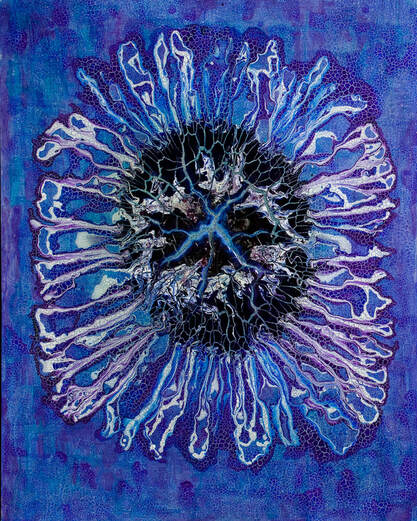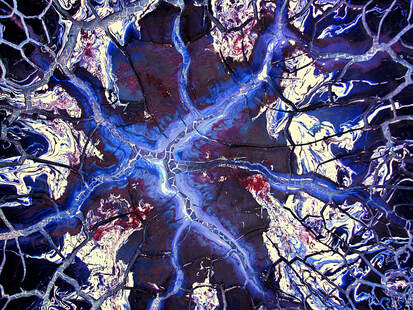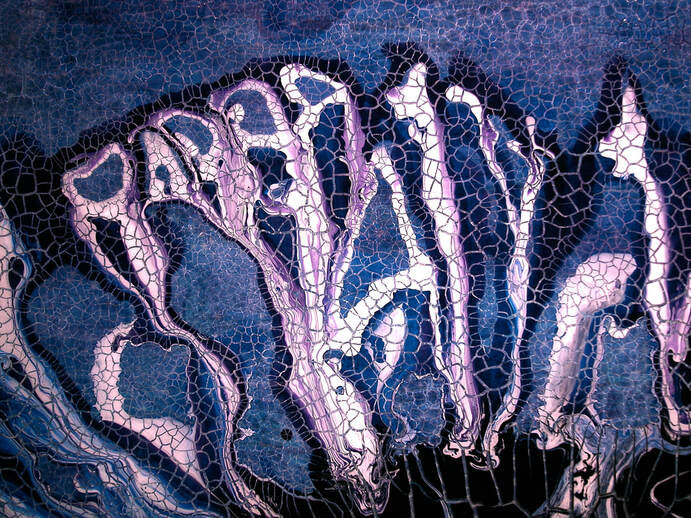|
by Abbey Christofferson
In 1961, Clement Greenberg, art critic and theorist, wrote the following about abstract art: "Art is a matter strictly of experience, not of principles, and what counts first and last in art is quality; all other things are secondary." ¹ Phyllis Toburen began her college experience during the 1960s and 1970s, an era of questioning which broke boundaries of social, political and artistic expectations to become a generation of protest. Her mission became reality and truth. Through art, she found a response to and a respite from the changing world in which she lived. Phyllis lives to create. Two types of people exist in the world—bystanders and witnesses. As a witness, Phyllis Toburen accepts the obligation to know, interpret, and convey the truth. Her art distills her life as a witness. The interaction with a divergent array of people cultivates a grace that empowers Phyllis with a special social freedom. Freed from the need to please others, she lives in a manner that allows her to function securely and effortlessly in a diverse society. The art she creates reflects her unique perspectives and experiences. Spiritual by nature, her art becomes the personification of her soul. When you meet Phyllis, you know immediately what she represents. The same can be said about her art. Phyllis Toburen developed her original and unprecedented technique of acrylic painting with consideration only for the artistic outcome. Neither the amount of time that elapses before a painting idealizes her perception of expressive excellence nor the cost or quantity of materials occurs to her. She will do layer upon layer of color and texture until she feels every one of her creative expectations are met. Many of her paintings develop in a manner similar to the way our earth formed during various geological phases. Delicate cracks and large ravines cut through layers of paint to allow the eye to see into the visual history of each piece. A completed painting may actually be a series of completed paintings, placed like transparencies on top of each other to create fascinating color mixing, depth, and unusual patterns. A juxtaposition of visual push and pull—both revealing and denying occurs. In her most recent work, Phyllis takes her art to the next level of technical precision by lifting the paint off the canvas in sculptural curling ribbons. Color is intrinsic to the three dimensional planes and angles that emerge from the canvas; color and form are one. The vibrant imagery stuns the viewer, as bold abstraction reveals technical innovation and precision, intertwining painting and sculpture on canvas. 1. Greenberg Clement. Abstract Representational and so forth, 1961. From Herschel B. Chipp, Theories of Modern Art, University of California Press: California. 1996: 577. 2. World Contemporary Artists. New Art International: A Compendium of Recent Works. Ed. Jeremy Sedley, et al. Vol. 12. New York: Book Art Press, Ltd., 2007. |
Indigo, Acrylic Resin on Gallery-Wrapped Canvas, 60"h x 48"w
Indigo - detail Acrylic on Gallery-Wrapped Canvas 48"h x 36"w
Indigo - detail Acrylic on Gallery-Wrapped Canvas 48"h x 36"w
|




